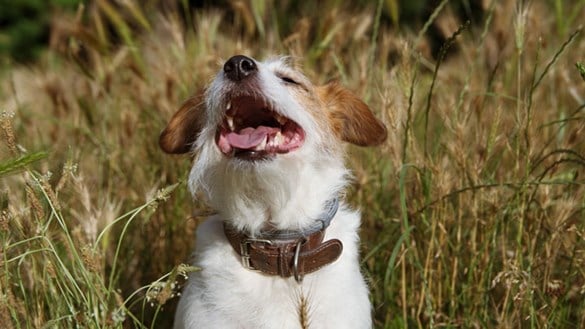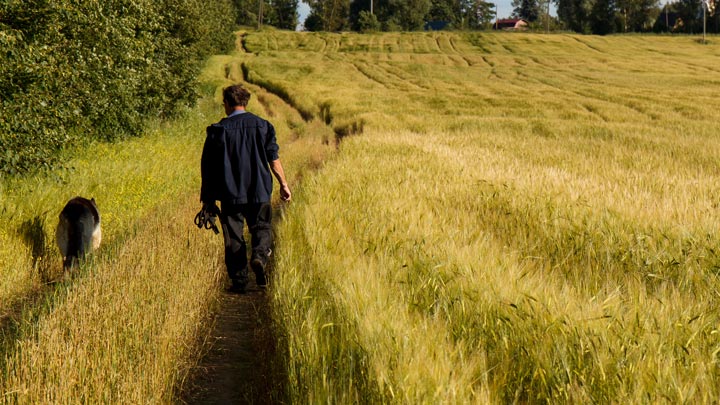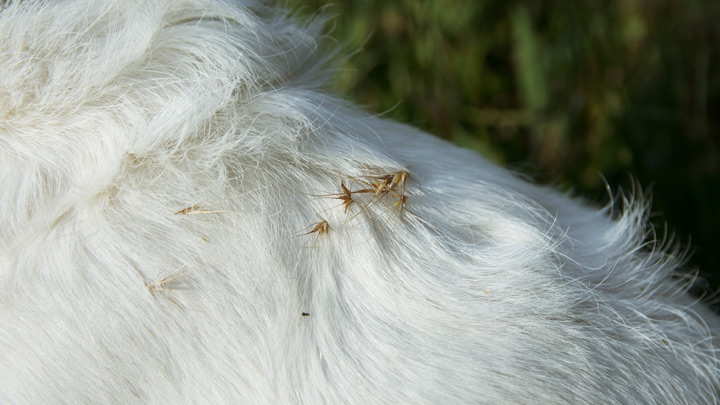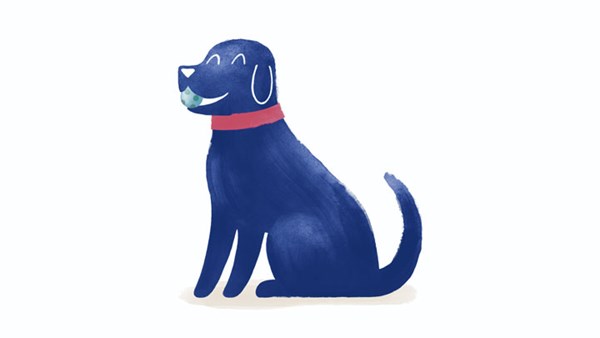Grass Seeds In Dogs
It’s grass seed season and for something so small, grass seeds can be very painful for your dog.

Grass seeds are a pain
Over the summer, our vets treat a lot of pets with issues caused by grass seeds.
These tiny ‘seeds’ are about the size of a grain of rice and can become incredibly painful for your dog. They can become lodged in a dog’s ears, eyes, paws; and as they are pointed and sharp, they can also work their way under the skin and around your dog’s body.
Grass seeds are most prevalent in the summer months; when the grass is longer, and your dog spends more time out walking and bounding around enjoying the lovely weather.
What can I do about grass seeds?
If possible, try and avoid areas where you can clearly see grass seeds. Where that isn’t possible, we recommend that after every walk in long grass or woodland areas, you check your dog over and brush away any grass seeds. You should pay particular attention to:
- Paws – check between your dog’s toes. You might even notice your dog licking their paw or limping. If a grass seed is lurking, the padded area may look sore and inflamed
- Ears – grass seeds can quickly become lodged in a dog’s ear. You may not be able to spot it. If your dog is shaking their head or holding their head to the side, this could be a sign that a grass seed has made its way into the ear canal
- Eyes – check around the eye area and make sure that your dog doesn’t appear to have any discomfort, redness in the eyes, additional blinking or using their paw to rub the eye
- Armpits – areas that aren’t as accessible by brushing and where movement can aid the journey of a grass seed should be checked carefully

It’s good practice to check your dog all-over if they’ve been having fun in grassy areas, especially if they’ve been rolling around with other dogs. Wherever possible, avoid spending too much time in this type of environment and reduce the risk. Grass seeds will be easier to spot if your dog is well-groomed and doesn’t have matted fur.
Many owners of long-haired or fluffy dogs will choose to keep fur trimmed around the ears and paws. This helps them spot anything that might get picked up on a walk. Grass seeds are not the only thing that you might have to pick out of your dog’s fur – but they’re one of the things that can cause the most damage and treatment can be challenging.
If you suspect that your dog has an injury caused by a grass seed, please contact your vet immediately.
What is the treatment for grass seeds?

If it’s possible to remove a grass seed and there’s is no evidence that it has penetrated your dog’s skin (no redness, swelling, excessive licking etc) then you should do so. However, we recommend that you then keep a watchful eye on your dog for any further signs of irritation.
If a grass seed has actually penetrated your dog’s skin or you believe that they have one lodged in their ear, around the eye area or their mouth, then you should talk to your vet immediately.
It’s important that you act as quickly as possible, as a grass seed that penetrates the skin can travel around your dog’s body. They can make their way to the chest and lungs, where they can be very difficult to locate, cause a lot of damage and can even prove fatal.
A grass seed is a vegetable matter and is therefore not visible on an x-ray. Often the only way to detect that there is an issue is by the soft tissue damage in the area that the grass seed has made its way to.
If the grass seed hasn’t fully penetrated and is visible, your vet may be able to retrieve it with an instrument like tweezers; usually this will require sedation, as your dog is likely to be in a lot of pain. Some grass seeds that have tracked internally may need removing with tiny tweezers and a small camera called an endoscope - your vet will advise you on this procedure if your dog requires it.
Four Simple Steps
- Avoid long-grass if possible, especially if you spot grass seeds growing.
- Keep your dog well groomed, so you can easily spot anything lodged in their fur.
- Check your dog carefully after every walk, especially if you’ve been walking in areas that you think contain grass seeds.
- Contact your vet immediately if you think that your dog may be suffering with a grass-seed injury.
For advice on grass seeds – please contact your vet.



